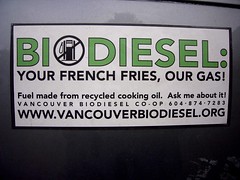One of the first things I became aware of when I joined Cx Associates is that sustainability is a way of thinking. I learned efficiency and judicious use of resources can be approached on many different levels, from choosing a more efficient clothes dryer, to finding alternatives for drying clothes, such as line or rack drying. All efforts toward sustainability are important, and a large impact can often be had for little effort and inconvenience. Multiplied by dozens or even hundreds and thousands of people, a seemingly small change can go a long way.
Culture of Stewardship
Since becoming an employee at Cx, I have definitely reduced my ecological footprint. This blog post is an opportunity to look back and calculate my impact so far in three main areas: electric consumption, emissions and fuel consumption from transportation, and avoided landfill. Some of my efforts in these areas, such as transportation, are directly financially subsidized by the company, however most have come about indirectly via the somewhat intangible, but nonetheless very real, support of our company culture of environmental stewardship.
Electric Consumption
Reduction of my personal electric consumption came by way of what I call ‘Solar for Small Devices’. With a few struggles and a minor learning curve (a topic for a future blog), I have successfully taken all of my personal small devices ‘off the grid’ over the past two years, including:
- 17 inch laptop (personal use)
- Personal tablet
- Music storage/playback devices
- Cell phone (not a smart phone)
- Camera batteries
- GPS locator
for a combined total estimated 5 kWh removed from the grid per year, per person (like unplugging a 60W lightbulb for around 3.5 days, 24 hours per day). If 1,000 people did this, that is 5,000 kWh per year, just for plugging our devices into a different plug. The solar battery has 12V round, and 5V USB outputs. Inverters to transform from 12V to 120V AC are widely and inexpensively available for automotive and marine use.
Since sustainability has little to do with return on investment for one individual person, ROI is not my metric of choice when calculating solar impact. Energy saved does not need to justify the cost of sustainability—it is my responsibility to make the nominal investment.
If the investment in solar power equipment is compared with the cost of the devices themselves, many may agree that the $500 cost of my solar power gear, while not free, is a small cost compared to the devices they power (estimated at $5,000). My solar panels and battery with charge control can be shared with friends and used with all my future new devices as well. When viewed as an environmentally friendly upgrade option to the equipment, I think most people would pay the 10% upgrade cost.
Many, including myself, could easily spend well over $500 on recreational activities, without ever looking for a payback. I figure, why start looking for payback when it comes to sustainability?
My scorecard so far: 2 years x 5 kWh =
10 kWh reduction in personal power consumption using clean solar PV instead of grid power
This may seem small, but it matters because the source of grid power may not be clean. It is not true that existing power systems are perfectly fine, and that solar systems can only compete if they can prove that they pay for themselves.
Reduction in Emissions and Fuel Consumption for Transportation
I came to Cx with a clean diesel car with a decent track record of 45 MPG average. I was under the impression, as I think many are, that I would need to modify my car to use biodiesel (4.582 lbs CO2/gallon) instead of standard diesel (22.91 lbs CO2/gallon) in my car.
What I found in my research as part of our Green Incentives Working Group is that diesel engines were designed to run on peanut oil, and that if I wanted to, I could go out the next day and fill my tank with B100, maybe even filtered waste vegetable oil. True, I will need to install a heater to use biofuel during the winter, however, between the months of May and October, I am emitting less CO2, and my car clearly likes biodiesel, with an improved average 10 to 15% miles per gallon. Further, my reduction in fossil fuel use by commuting on mass transit using the free bus passes from my company is estimated at 25%.
My three year scorecard so far based on 1,320 less CO2 and 35% less fuel annually:
3,960 lbs CO2 reduction
150 gallons fuel reduction
Avoided Landfill
Shortly after joining the company, I invested in a portable coffee mug, which I carry with me everywhere. My company also provides them for free, so I did not even need to purchase my own. As an avid coffee drinker, I save approximately one single use disposable cup per day, 365 cups per year, or 91 pounds of CO2 and 340 square feet of natural habitat saved, per person, per year. Combined with choosing to also use my portable cup for fountain drinks at lunchtime, I avoid use of an additional 100 bottles and cans per year—buying bulk when possible instead of buying individual packaging is more sustainable.
Four year score for avoiding single use disposable cups, per person:
364 pounds CO2 avoided
1,360 square feet natural habitat saved
Summary
In summary, a culture of sustainability in my workplace has positively affected both by own lifestyle, and the environment by providing a powerful incentive. Once I started looking, it was easy to see the ‘low hanging fruit’. The incentive of having an impact, and seeing that my small personal choices do make a difference, is reward enough.
(1) The population of Vermont is around 625,000 people.
(2) The number of licensed drivers in Vermont is around 500,000 people.
(3) Approximately equivalent to the energy use of a typical home in one year.
(4) Approximately equivalent to planting 33 trees.
(5) Habitat for one frog.









